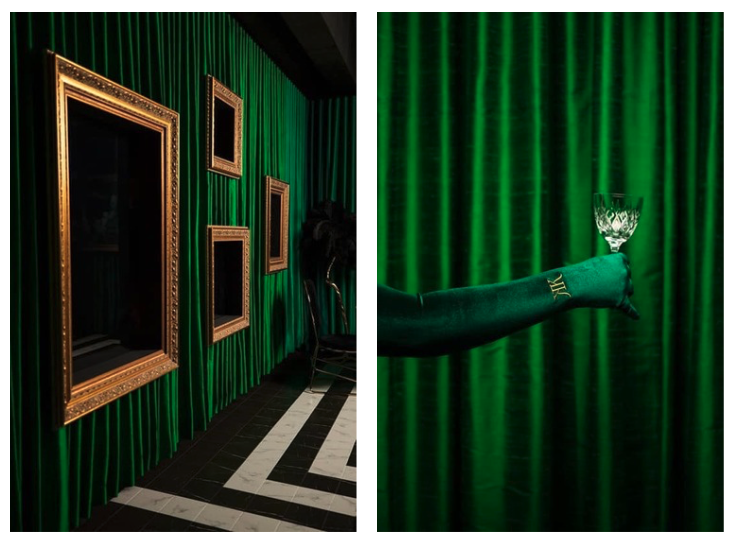Tasmania Court Finds Women-Only MONA Installation “Discriminatory”
By Anna Lentchner

Details of KIRSHA KAECHELE’s "High Tea for Two: Ladies Lounge," 2024. Courtesy the Museum of Old and New Art.
A Tasmanian court has ordered that the Museum of Old and New Art (MONA) must allow male visitors into its Ladies Lounge installation, weeks after New South Wales man Jason Lau claimed the artwork contravened the state’s anti-discrimination act. The installation was created by American artist and curator Kirsha Kaechele, the spouse of MONA’s owner, millionaire David Walsh.
Ladies Lounge, which opened in 2020, mimics the extravagant opulence of yesteryear, with tickets running for AUD 500 (USD 330) per pair to the high tea event inside the museum. According to MONA’s website, the artwork was inspired by Kaechele’s great-grandmother, “a scandalous socialite who threw ladies-only parties at her Beverly Hills and Basel estates involving a fleet of devoted butlers, 400-year-old wines, and the occasional visit from Pablo Picasso.” In keeping with this tradition, the MONA installed several Picassos around the Lounge, “rummaged from great-granny’s attic,” as well as works by the late Australian painter Sidney Nolan and international antiquities.
Lau attempted to experience this lavish women-only artwork in April 2023, but was reportedly barred from entering. After filing a complaint to Equal Opportunity Tasmania against MONA, he argued before Tasmania’s Anti-Discrimination Commissioner that he had “paid 35 Australian dollars [USD 23]” and that “anyone who buys a [museum] ticket would expect a fair provision of goods and services,” including all artworks on display.
The Commissioner referred Lau to the deputy president of Tasmania’s Civil and Administrative Tribunal, Richard Grueber, who permitted a hearing on the case. In March, Kaechele told the Guardian Australia she felt “absolutely delighted” by the court’s involvement. On April 8, however, Kaechele staged a performance-protest outside the courthouse involving dozens of women in blue business suits and red lipstick dancing to Robert Palmer’s 1988 hit “Simply Irresistible.” Grueber said of the spectacle: “At the very least it was inappropriate, discourteous, and disrespectful, and at worst contumelious and contemptuous.”
MONA’s defense later argued that the rejection Lau had experienced was not discrimination but the artwork's intention. Ladies Lounge is “a response to the lived experience of women forbidden from entering certain spaces throughout history,” referencing her experience waiting at a “ladies’ lounge” in a local pub, a result of a defunct law before 1965 that barred women from male drinking venues. MONA’s counsel further argued that selective entry is permitted by Tasmanian law when it is “designed to promote equal opportunity for a group of people who are disadvantaged.”
Grueber disagreed, calling the participatory component of the installation “intentionally discriminatory.” His judgment stated that “it is not apparent how preventing men from experiencing the art within the space of the Ladies Lounge, which is Mr. Lau’s principle complaint, promotes opportunity for female artists to have work displayed.”
Having lost the suit, MONA must permit “persons who do not identify as ladies” into the installation, although the institution has been given 28 days to alter the work. Via Instagram stories, Kaechele stated that this has been “one of the most difficult periods of [her] life,” and that she needs to “absorb the situation, seek council and compose [herself].”
Anna Lentchner is assistant editor at ArtAsiaPacific.







